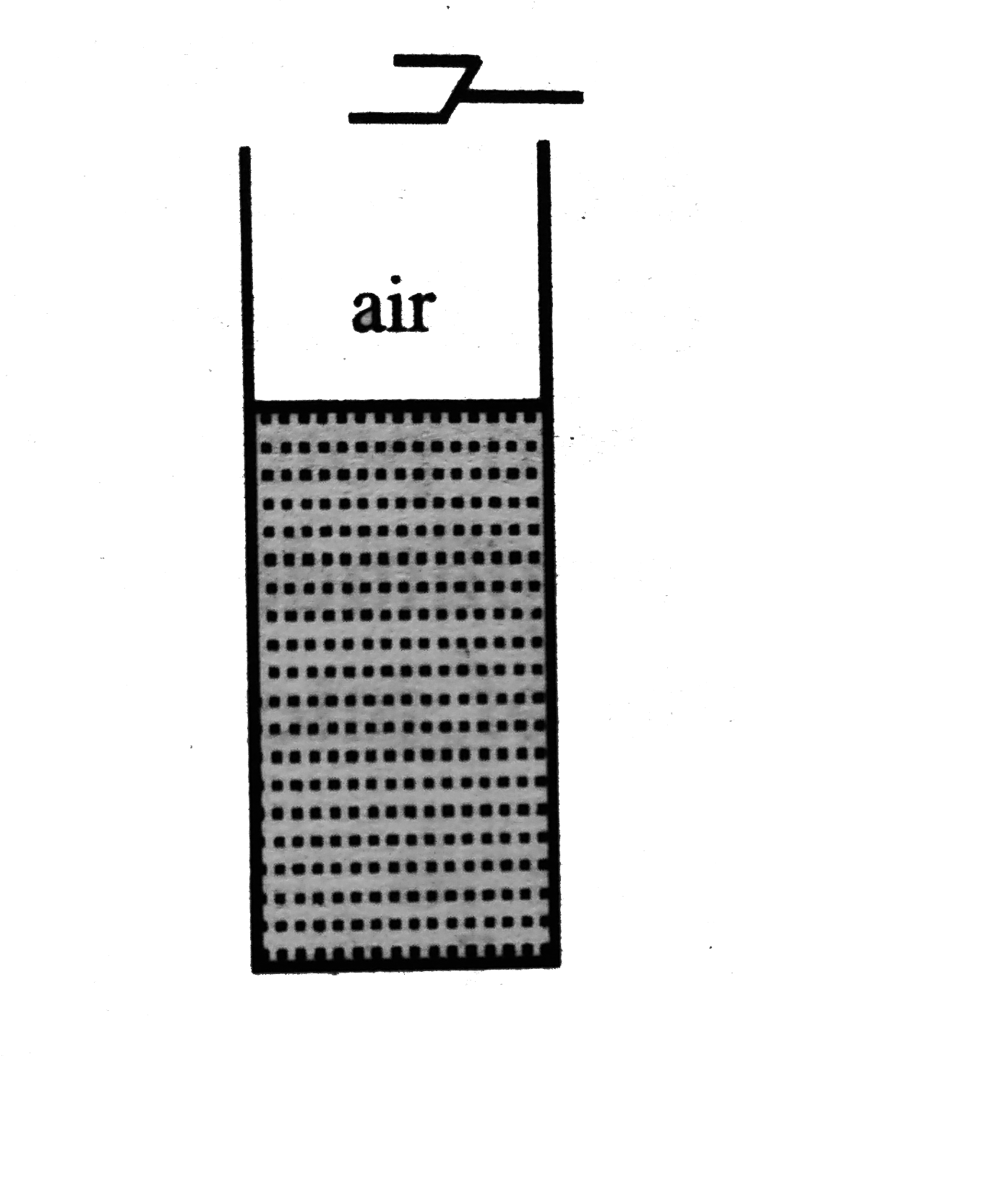A student is performing an experiment using a resonance column and a tuning fork of frequency 244s−1. He is told that the air in the tube has been replaced by another gas (assuming that the air column remains filled with the gas). If the minimum height at which resonance occurs is (0.350±0.005)m, the gas in the tube is (Useful information : √167RT=640J1/2mol−1/2,
√140RT=590J1/2mol−1/2. The molar masses M in grams are given in the options. take the values of √10M for each gas as given there.)
Neon (M=20,√1020=710)
Nitrogen (M=28,√1028=35)
Oxygen (M=32,√1032=916)
Argon (M=36,√1036=1732)
The correct Answer is:D
Frequency (f)= v4l=14l√γRTM
λ4=l=0.350±0.005
λ=1.400±0.020
Speed (u) =fλ=244(1.4±0.02)
v=(341±64.88)m/s
For monoatomic λ=1.67
v=√167RT√10M=640×710=448m/s (for Neon)
v=640×1732=340m/s (for Argon)
For diatomic γ=1.4
Nitrogen →v=590×35=354m/s
Oxygen →v=590×916=331.875m/s.
Similar Questions
A 244 s^-1 A student is experimenting with a resonant air column with a frequency melody It is assumed that the tube is filled with air. The minimum length that resonates when gas is taken from the tube instead of air is (0.350+- 0.005) m. What is the modified gas in the tube? (Granted sqrt(167 RT) = 670 J^(1/2)*mol^(-1/2), sqrt(140 RT) = 590 J^(1/2)*mol^(-1/2) The molar mass of the following options is expressed in Mg units, in this case sqrt(10/M) Use the values provided by)
View SolutionIf l_(1) and l_(2) are the lengths of air column for the first and second resonance when a tuning fork of frequency n is sounded on a resonance tube, then the distance of the displacement antinode from the top end of the resonance tube is:
View SolutionA student is performing the experiment of resonance column. The diameter of the column tube is 6 cm. The frequency of the tuning fork is 504 Hz. Speed of the sound at the given temperature is 336 m/s. The zero of the meter scale coincides with the top end of the resonance column tube. The reading of the water level in the column when the first resonance occurs is:
View SolutionIn determination of velocity of sound in air using resonance column tube, radius of cylindrical tube is 1 cm and frequency of tuning fork is 256 Hz. If velocity of sound is 340 m/s then length of air column in the tube when first resonance occurs, is
View Solutionएक विद्यार्थी एक अनुनाद स्तम्भ तथा एक स्वरित्र द्विभुज (tuning fork), जिसकी आवृत्ति 244s−1 है, को उपयोग में लाते हुए एक प्रयोग करता है। उसे बताया गया है कि नली में वायु के स्थान पर एक अन्य गैस भरी हुई है। (मान लीजिए स्तम्भ सदैव गैस से भरा रहता है।) यदि अनुनाद की स्थिति के लिए न्यूनतम ऊँचाई (0.350±0.005)m है, तब नली में उपस्थित गैस है/हैं :
√167RT=640J1/2mole−1/2,√140RT=590J1/2mole−1/2 तथा प्रत्येक गैस के लिए उनके मोलर द्रव्यमान M ग्राम का मान विकल्पों में दिए हैं। √10M का मान जैसा कि वहाँ दिया गया है, वही प्रयोग करें।
View SolutionIf l_(1) and l_(2) are the lengths of air column for the first and second resonance when a tuning fork frequency n is sounded on a resonance tube, there the distance of the antinode from the top end of resonance tube is
View SolutionA resonance occurs with a tuning fork and an air column of size 12cm. The next higher resonance occurs with an air column of 38cm. What is the frequency of the tuning fork ? Assume that the speed of sound is 312m/s.

View SolutionIn determination of velocity of sound in air using resonance column tube, radius of cylindrical tube is 1 cm and frequency of tuning fork is 256 Hz. If velocity of sound is 340 m/s then length of air column in the tube when first resonance occurs, is
View Solution
